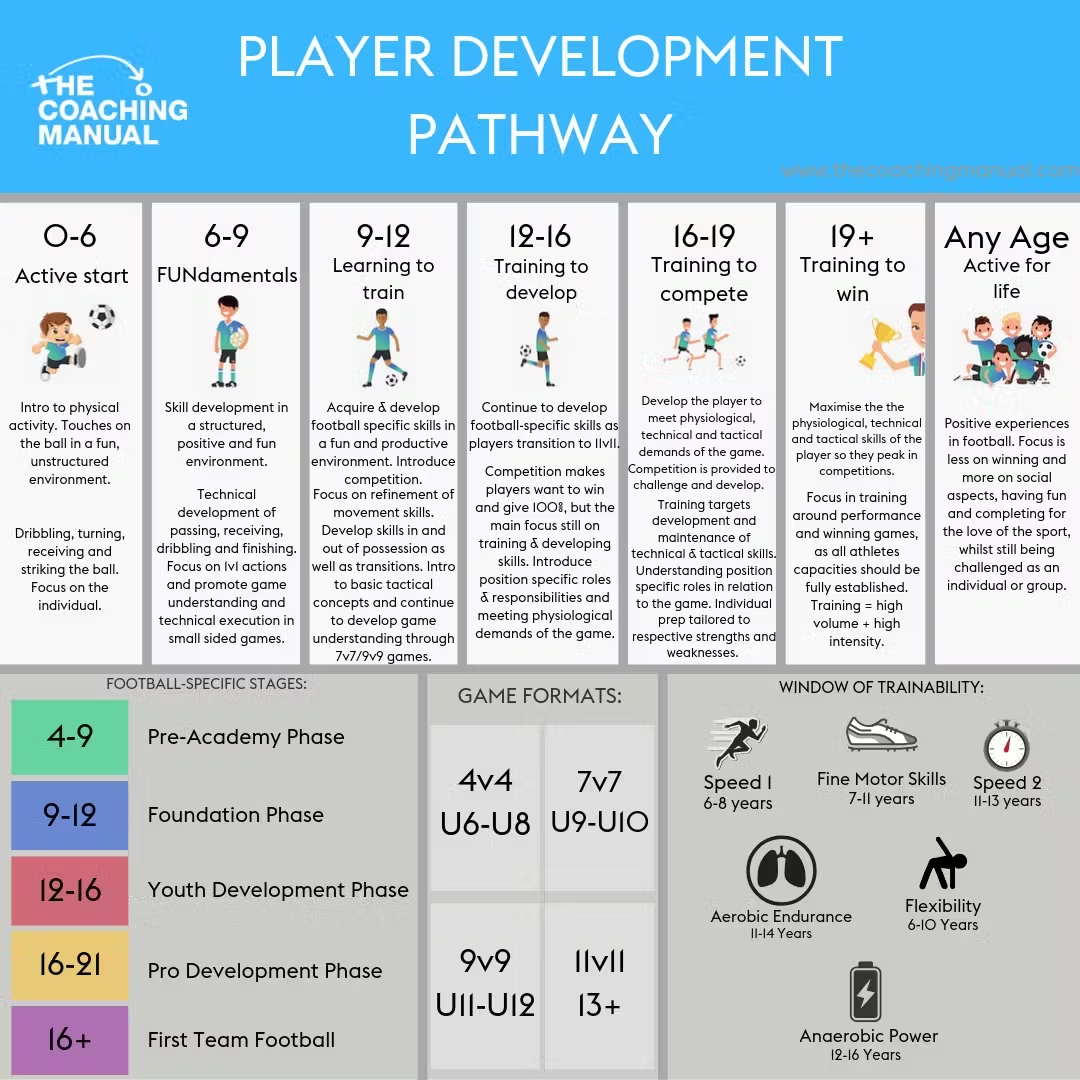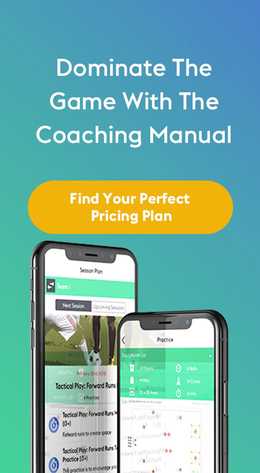A player’s journey through their youth makes them change drastically both physically but also in terms of their levels of maturity. So coaches need to understand what these changes mean and adapt their coaching methods accordingly.
Physical Growth
Over the years as players grow up their bodies will change and in turn, their ability to do certain things on the football pitch will change as well. However, it is important to remember that certain players develop at different speeds so as a coach it’s your job to recognise these differences.
For instance, when some players experience growth spurts they may lose some coordination, acceleration and even confidence in their ability. Therefore, coaches must be patient with these players if they begin to get frustrated with the lack of success when performing certain skills.
If this becomes a problem, you should plan to adapt sessions to help players with their confidence.
EXAMPLE:
A player is used to running past defenders in 1v1 situations however they are currently going through a growth spurt and have lost some power to accelerate. What should the coach do?
The coach could have a quiet word with the player during a break and set them different challenges to get some success. In this case, the coach may say to the player ‘try and play a one-two to get around the defender’. This will then allow the player to work on their combination skills and hopefully benefit from the practice.
Maturity
Many adults/coaches/parents judge what players/children can do entirely based on their age. However, in many cases, a child’s date of birth could be up to 12 months different to that of their peers but they are still placed in the same year at school.
Youth coaches should always bear this in mind when coaching their teams. In these situations, a player’s maturity levels could be very different to that of some of their teammates.
This can affect many things in training, for example, the way in which players learn. Here are some of the different learning styles that should be addressed:
- Visual (spatial): Players who prefer looking at a tactics board.
- Aural (auditory): Players who prefer to listen to instructions.
- Verbal (linguistic): Players who prefer to talk in groups.
- Physical (kinesthetic): Players who prefer to try the practice for themselves.
Coaches should try and utilise these different tools to try and cover all the different learning styles of the players in their team.
Another thing that differing maturity levels can affect is how coaches should communicate with players. For example, the less mature players in the team require more basic language so they can fully understand the instructions. This means the more mature players should be able to understand the more technical terms.
Follow this link to view our communication infographics which can be shown to your players to help everyone on the team to be on the same page.
What to coach and when
The infographic below acts as the perfect guide when searching for what to coach your players during the different stages of their youth.



